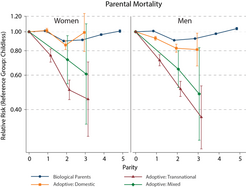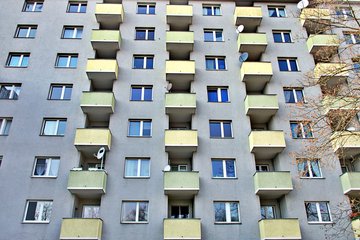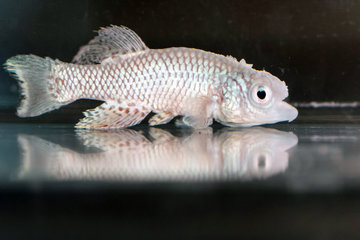How children influence the life expectancy of their parents
Does having children make us live longer? The numbers say yes, but the reasons are not yet understood.
There somehow seems to be a link between people’s life expectancy and the number of children they have: People with children generally live longer than those without. Parents with two children even have a small longevity bonus added to their lifespan. A new study based on data on biological and adoptive parents explores the potential reasons for this association.

Prima facie, the numbers are clear: Mothers and fathers generally live longer than the childless. The effect is particularly pronounced for adoptive parents: Adopting a child adds three years to the lifespan, adopting two or three kids adds five years. This is shown by a new study authored by Kieron Barclay of the Max Planck Institute for Demographic Research, Rostock, and Martin Kolk of the University of Stockholm, and published in the European Journal of Population. The authors used data on more than four million Swedish women and men born between 1915 and 1960
The association between parity and longevity is not new. And there are very diverse theories on the subject. But the Rostock study is special because Barclay and Kolk inter alia use data on adoptive parents. This way, they are able to pick apart physiological and social explanations.
For example, a common theory has it that biological mothers are less likely to develop breast or uterine cancer. And this is confirmed by data on health from Sweden. But Fig. 1 clearly shows, that biological fathers and adoptive parents generally have a lower mortality than childless people, too (see Fig. 1). And the curves in the graph show similar patterns for men and women. Biomedical explanations purely based on a mother’s physiological processes and the physiological costs of childbearing thus are at best a small piece of the jigsaw in explaining the relationship between parity and mortality.
Capacities of the parents play a key role

Barclay and Kolk can neither confirm another theory that is based on physiological processes, the so-called disposable soma theory. It posits that women in particular invest their energy and health in either reproduction or longevity. But mortality among adoptive and biological parents is lower for those who adopt at least up to four children relative to childless people; thus the theory is discarded by the two researchers. The disposable soma theory could at best have been relevant in historical settings, i.e., when childbearing was associated with higher risks for women and when the social and health care system was poor compared to modern standards, the researchers write. For similar reasons they do not support the theory of social depletion, which emphasizes the social and emotional rather than the physiological stress involved in being a parent.
Barclay and Kolk rather believe that it is not childbearing and the presence of children as such that play important roles in extending the lifespan of parents. It is much more likely that parents are better off right from the start than those who will not have children. Simply put, those who are healthy, financially well off and have a high level of education are more likely to attract a partner, and they also have the resources to start a larger family. These people then have a mortality advantage right from the onset – the advantage would thus be a prerequisite rather than a consequence of having children.
For example, when the two researchers adjust for respondents’ educational attainment and occupation in the analysis, mortality among biological parents markedly approaches that of childless people (see Fig. 1), the mortality advantage disappears for biological fathers and mothers with one child, and biological parents with five or more children even have a lower life expectancy than the childless. Here too, selection may play an important role: In the past, parents with many children often had a relatively low level of education, they were on a low income, and they had no positive health habits.
Especially adoptive parents profit

The situation is different with adoptive parents. These have already been positively selected into parenthood following rigorous screens for suitability as adoptive parents: Assessment includes physical and mental health, financial resources, living conditions at home, social interaction, and behavior. Barclay and Kolk thus conclude that the mortality of adoptive parents would be markedly lower than that of biological parents (who are not subject to the selection process) (see Fig. 1).
A more detailed analysis of adoptive parents highlights the important role this assessment plays (see Fig. 2). For example, individuals seeking to adopt transnationally are subject to much more selective screening by the adoption authorities than those who adopt Swedish children. Parents who adopt domestically have about the same mortality as biological parents, but the mortality of those who adopt transnationally is much lower. That is, right from the outset only the healthiest, the most stable, and the strongest individuals probably were selected.
Analyses by educational category also reveal a selection process in operation (see Fig. 3). We see first the expected results: The higher the education, especially for women, the lower the mortality among them. In the higher-educated groups, however, the longevity advantage seems to increase with the number of children a mother has. Women without senior high-school graduation have the lowest mortality when they have two children; this compares to women who have graduated from senior high school and have three kids. A university-educated mother of four children can expect to live the longest.
Children also increase life-expectancy of the higher-educated

But selection alone does not explain the differences between parents and childless individuals. As can be seen in Figure 1, the majority of parents, namely those with two, three, or four children, continue to have a longevity advantage over the childless even when variables such as education and occupation are factored in.
Barclay and Kolk attribute this advantage in longevity to the fact that the presence of children has a positive influence on their parents’ health. There are two different possible theories: One theory holds that children may later direct support and resources to help their aging parents. Studies, for example, have shown that lifespan extension for parents is associated with high educational attainment and high income of their children. In general, however, Barclay and Kolk found no evidence to support this theory. For then it could be expected that parents would benefit the more from this support, the more children they have; when, in fact, the life expectancy of biological parents climbs only up to the second child and then starts to decline again (see Fig.1).
It is rather more likely that parents are healthier because the presence of children induce changes in the lifestyle of their parents, Barclay and Kolk believe. Mothers and fathers adopt a healthier behavior: They are less likely to have accidents than childless people, and they are also less likely to suffer from circulatory disease. This is also true for adoptive parents. Although only those who maintain a healthy and responsible lifestyle are selected into this group, a positive effect on longevity of the presence of children is evident here, too, write Barclay and Kolk. This applies especially to transnational adoption: Life expectancy increases with each child in a group of adoptive parents that had already been strongly selected and includes above all healthy, stable, and well-off people.















